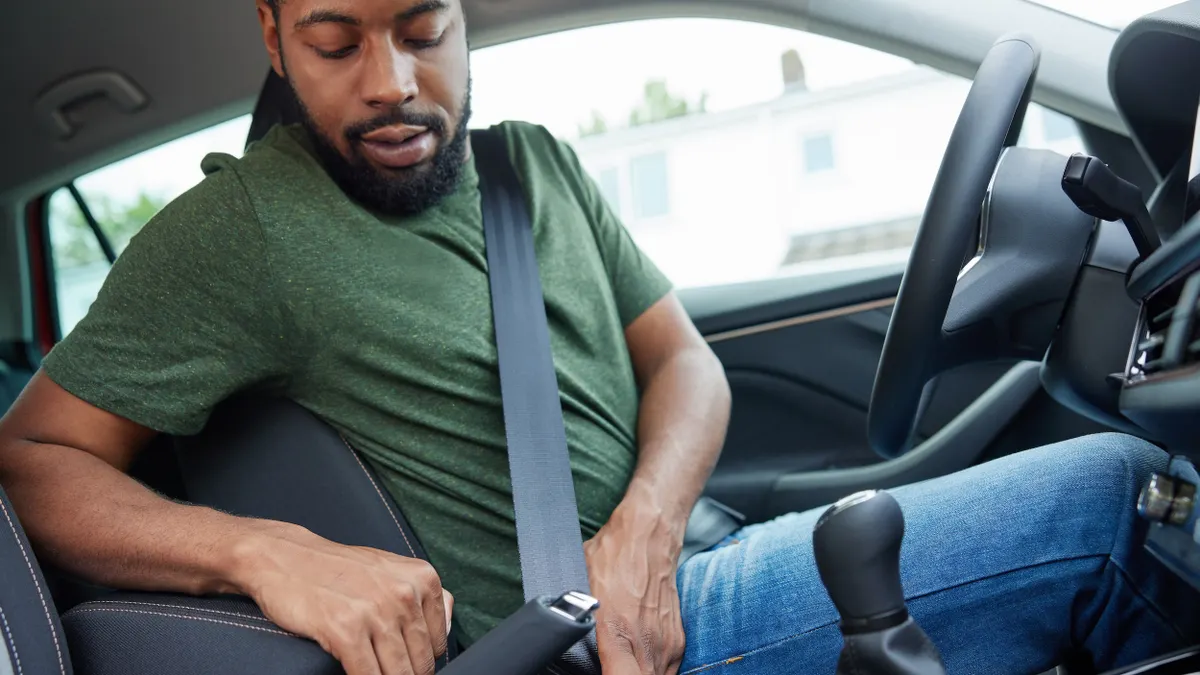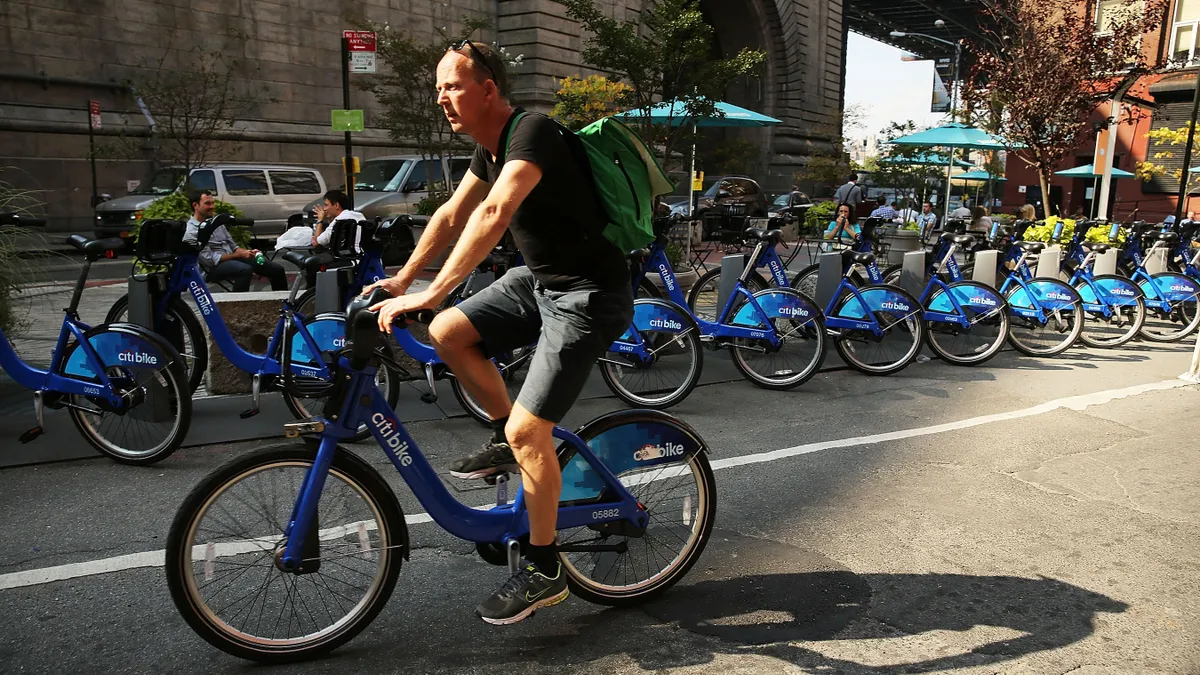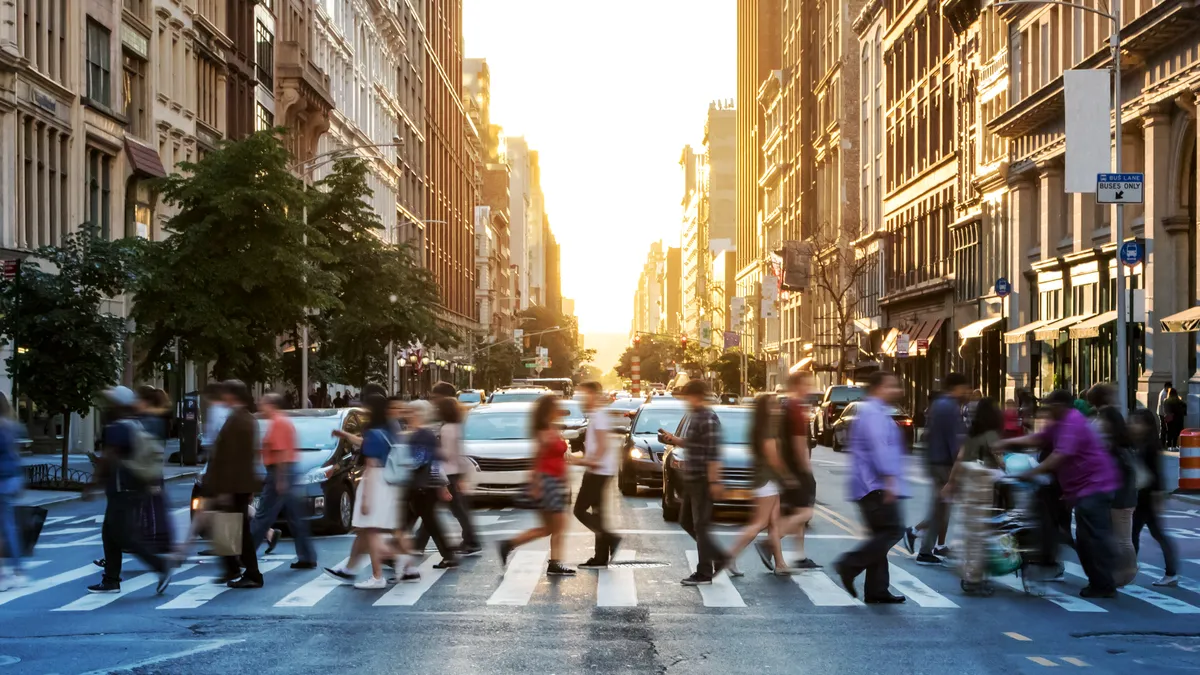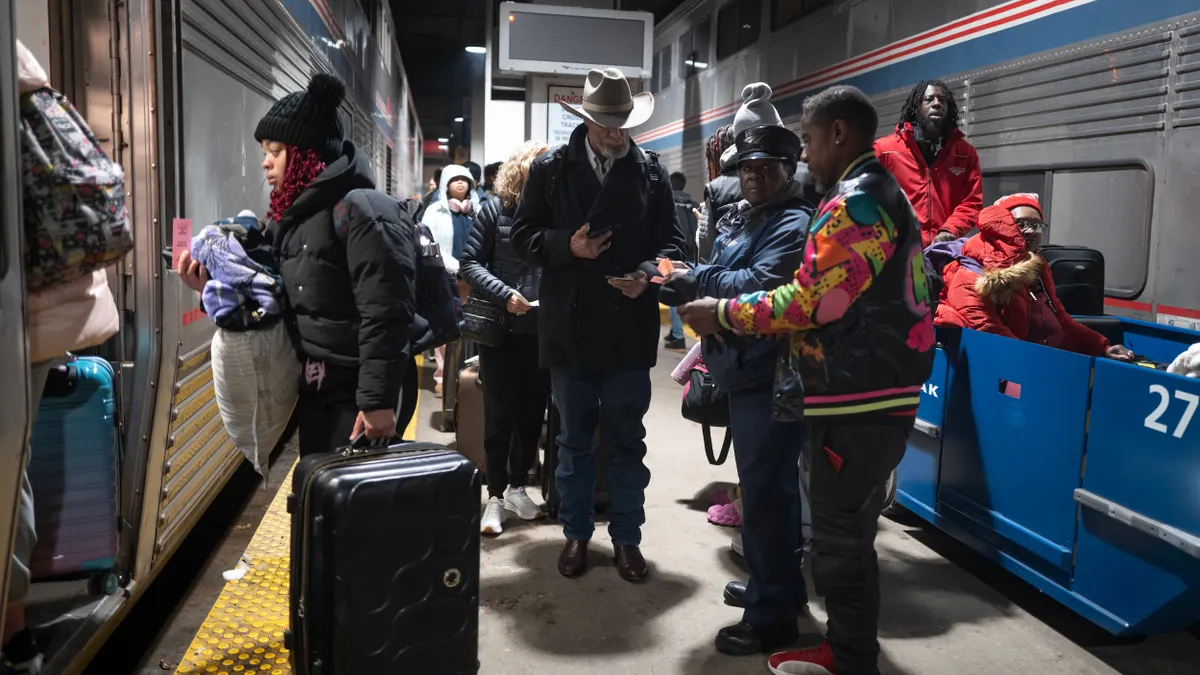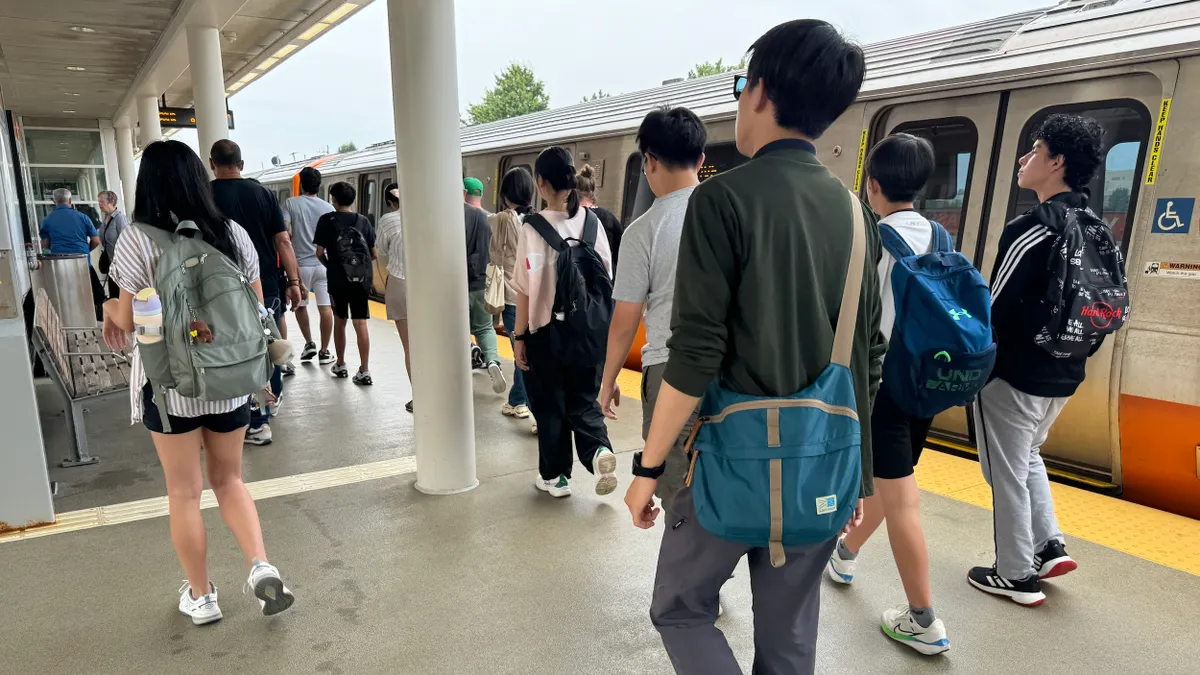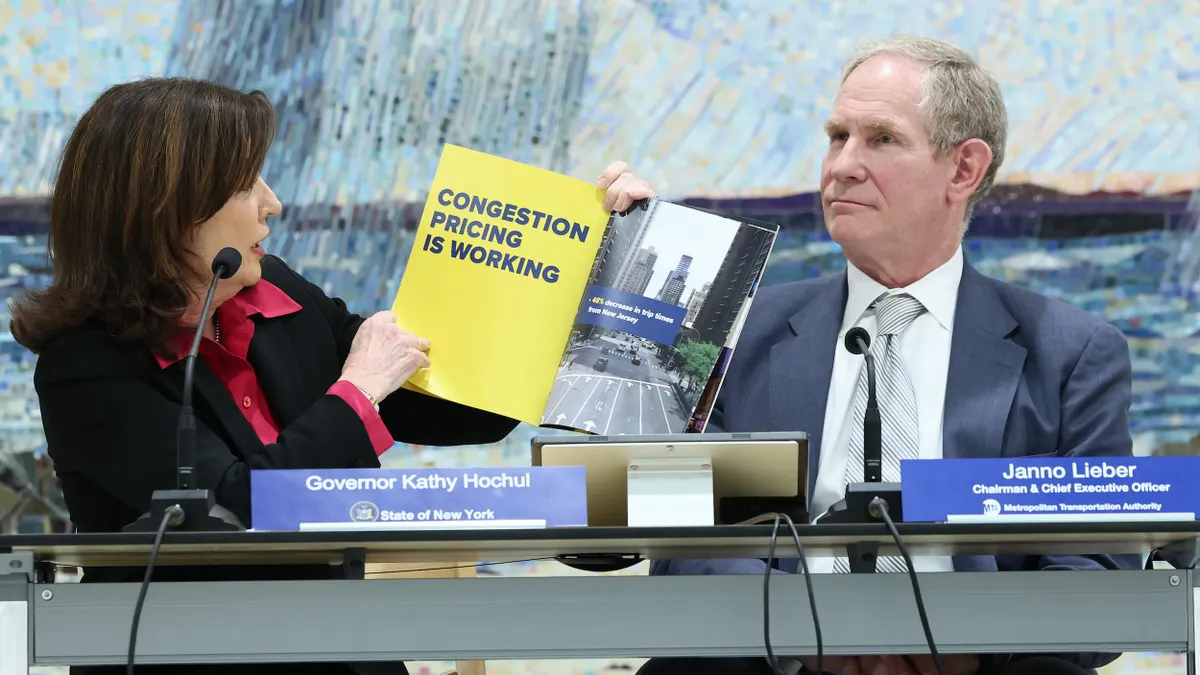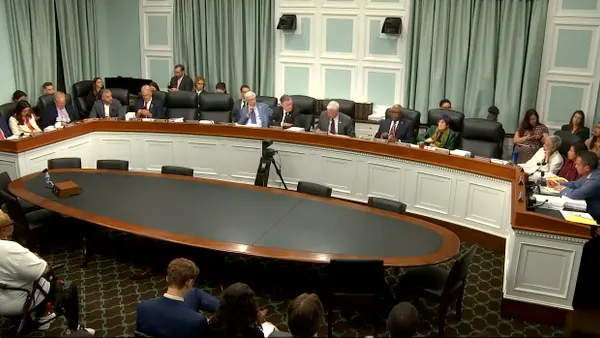The global outbreak of the new coronavirus has both U.S. officials and residents on high alert, particularly in cities where coming into close quarters with a stranger is an inevitable reality.
As health officials urge individuals take preventative actions to avoid exposure to and spread of the virus, some common spaces are necessary for the public to occupy — such as mass transit.
In some cities, trains and buses can become ground zero for the spread of a virus that is easily communicable, as fleets are often packed with riders touching turnstiles and handrails. Agencies like the American Public Transportation Association (APTA) are monitoring the potential impact of the virus on public transportation, yet transit agencies are taking it upon themselves to combat the spread — and comfort customers — before ridership takes a massive hit.
Smart Cities Dive looked at how the nation's five largest transit systems are handling the coronavirus outbreak. Is your city taking a creative approach to protecting transit? Drop us a note.
Metropolitan Transit Authority (MTA)
With a ridership of 1.68 billion annually, New York's MTA has a critical responsibility to take proactive measures in the wake of the growing pandemic.
Last week, MTA announced a number of protocols it will take across its system to combat the virus, such as stockpiling hygienic supplies and conducting "enhanced sanitizing procedures across the system." The agency is also increasing access for MTA employees to receive flu shots, noting, "Keeping our workers healthy helps keep you healthy."
The cleaning procedures — happening across New York City Transit, MTA Bus, Long Island Rail Road, Metro-North and Access-A-Ride — are occurring across the fleet every 72 hours, according to Gothamist. Officials are using a bleach disinfectant to scrub transit seats and railings, as well as fare boxes, benches, elevator buttons and handrails.
Regardless of these procedures, Gov. Andrew Cuomo, D, has encouraged the public to avoid packing into transit cars when possible.
"If citizens are taking mass transit, if you can move to a train car that is not as dense, if you see a packed train car, let it go by, wait for the next train, same with if you're taking a bus," Cuomo said during a press conference. "It's the density to proximity that we're trying to reduce."
Meanwhile, Mayor Bill de Blasio discouraged people from riding the subway at all if they feel sick.
Washington Metropolitan Area Transit Authority (Metro)
While federal officials in the District monitor the global spread of the outbreak, the District's transit authority is taking a dedicated approach to protecting Metro riders.
Metro, which sees an average weekday ridership of 626,000, has enacted its Pandemic Flu Plan (PFP), quickly moving to phase two of the four-phase plan last week following the confirmation of DC-area outbreaks in Maryland and Virginia, as well as the District's first confirmed case of the virus. The plan includes fleet cleaning protocols, daily absenteeism monitoring to detect illness patterns, and direct communication with the Centers for Disease Control and Prevention (CDC) and other transit systems to keep a finger on the pulse of the outbreak.
The transit authority also activated a pandemic task force last month to ensure resources are stocked and contingency plans are set in case the situation becomes more dire. That task force is meeting regularly to address Metro's response to the virus.
Chicago Transit Authority (CTA)
CTA bus and rail ridership totaled 468.1 million in 2018, according to its most recent data. Like New York's MTA, the CTA is aggressively working to disinfect its transit system with daily cleanings, including disinfecting vehicle surfaces, as well as routine deep cleanings, "which entails intensive cleanings of the interior surfaces and exterior periodically," according to the agency.
While CTA notes on its website that these cleanings are "in response to the potential spread of the Coronavirus," the Chicago Sun Times reports these daily cleanings were already a regular occurrence on the city's trains, and CTA has not yet taken any dedicated actions.
"CTA has a rigorous cleaning schedule for our vehicles and rail stations that is among the strongest in the transit industry,” CTA said in a statement, as reported by the Sun Times. "Though CTA already follows industry best practices, we will continue to monitor information and procedures that could further enhance our efforts."
Massachusetts Bay Transportation Authority (MBTA)
A few cases of the coronavirus have been reported in Massachusetts, leaving Boston-area residents and officials concerned of the impact on its transit system, which sees an average of 1.8 million trips daily.
Last week, MBTA announced a new protocol to clean high-contact subway surfaces every four hours, and to disperse hand sanitizer dispensers more widely in stations and public areas.
Bay Area Rapid Transit (BART)
BART, which averages 414,000 trips daily, is approaching the coronavirus in a similar manner to its peer transit agencies by increasing station cleaning and train car disinfecting, procuring more hygienic materials like hand sanitizers and face masks, and increasing communications with riders.
One method of communication is through posters with tips on how to avoid the spread of the virus. BART has taken the lead in printing these posters and placing them around stations, according to SF Gate.
In a tweet last week, BART Director Rebecca Saltzman publicly shared a memo from BART's chief safety officer regarding actions the agency is taking. The director hasn't tweeted any information or updates about the virus since, despite cases in the Bay Area increasing dramatically.
Since folks have been asking me about BART's coronavirus plans, I asked staff for a memo. Here's the memo BART's chief safety officer sent to the BART Board Monday evening. It includes what BART is doing now, and what BART would do if there's coronavirus exposure on BART. pic.twitter.com/KhwzyazUOS
— Rebecca Saltzman (@RebeccaForBART) March 4, 2020








